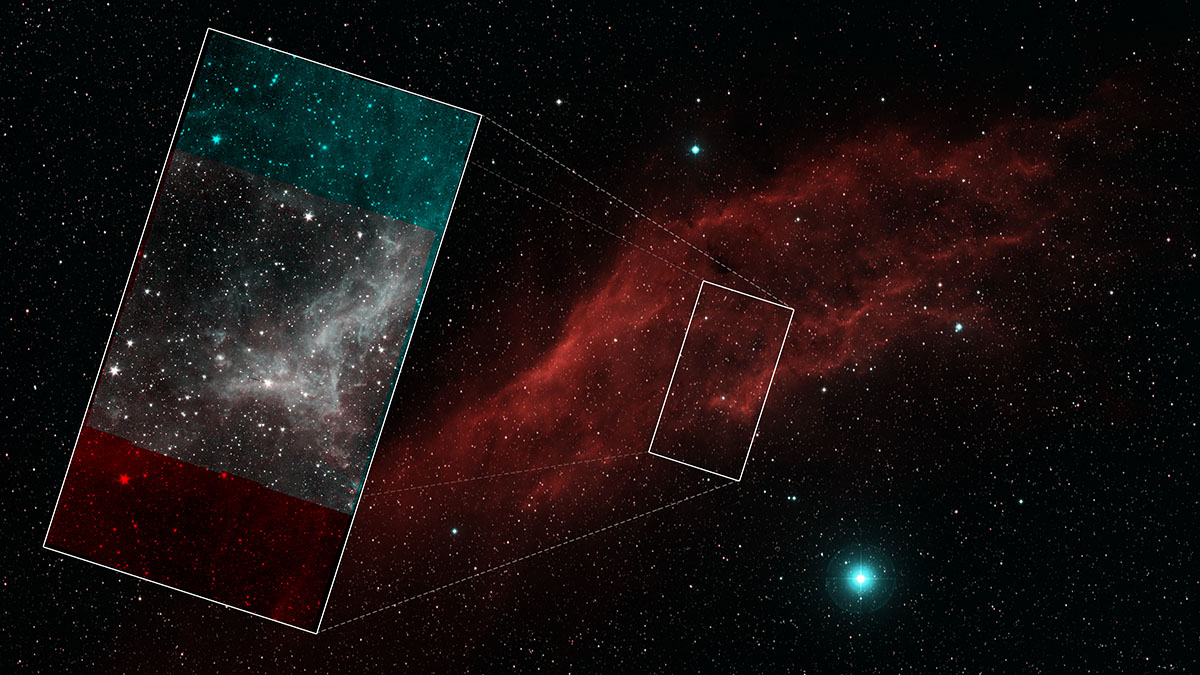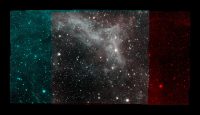This view shows the California Nebula imaged in visible light. The inset shows a section of the nebula imaged by NASA’s recently retired Spitzer Space Telescope, which studied the universe in infrared light. (NASA/JPL-Caltech/ Palomar Digitized Sky Survey)
Home This view shows the California Nebula imaged in visible light. The inset shows a section of the nebula imaged by NASA’s recently retired Spitzer Space Telescope, which studied the universe in infrared light. (NASA/JPL-Caltech/ Palomar Digitized Sky Survey) This view shows the California Nebula imaged in visible light. The inset shows a section of the nebula imaged by NASA's recently retired Spitzer Space Telescope, which studied the universe in infrared light. (NASA/JPL-Caltech/ Palomar Digitized Sky Survey)



